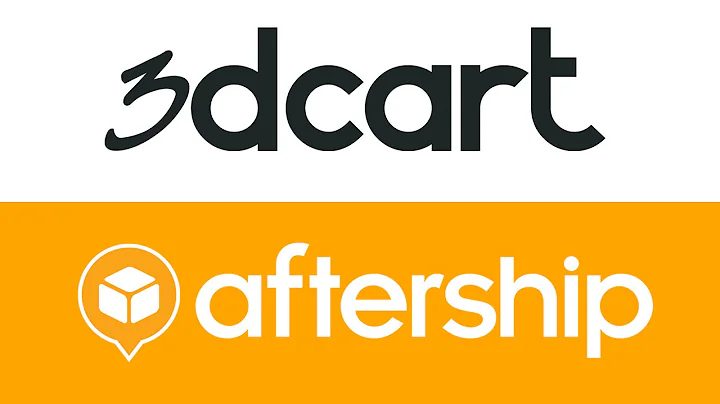Supercharge Your E-commerce with HubSpot and Shopify Integration
Table of Contents:
- Introduction
- Accessing the Shopify for HubSpot Integration
- Syncing Shopify Data into HubSpot
- Managing Contacts and Orders
4.1. Reflecting Shopify Data in HubSpot
4.2. Tracking Deals and Orders in HubSpot
4.3. Creating a Product Library in HubSpot
- Unifying Business and Tools
- Powerful Marketing Opportunities
6.1. Segmenting Signals in HubSpot
6.2. Personalized Emails and Workflows
- Increasing Customer Revenue
- Pre-Built Workflows
8.1. Customer Welcome Emails
8.2. Abandoned Cart Nurturing
8.3. Customer Reengagement Campaigns
- E-Commerce Reporting
9.1. Customizable Report for Channel Analysis
9.2. Abandoned Cart Recovery Report
- Leveraging HubSpot's Full Power
10.1. Website Building and SEO Tools
10.2. Email Marketing and Social Media Integration
10.3. Customer Service and Reviews
- Conclusion
Shopify for HubSpot: The Ultimate E-commerce Integration
The integration of Shopify with HubSpot is a game-changer for e-commerce businesses worldwide. With this powerful combination, you can seamlessly connect your Shopify store to your HubSpot portal, unlocking a wide range of features to streamline your operations and supercharge your marketing efforts. In this article, we will explore how to access the integration, sync Shopify data into HubSpot, manage contacts and orders, unify your business and tools, utilize powerful marketing opportunities, increase customer revenue, leverage pre-built workflows, generate insightful e-commerce reports, and harness the full power of HubSpot for your business. If you're ready to take your e-commerce game to the next level, read on to discover the endless possibilities offered by the Shopify for HubSpot integration.
1. Introduction
The introduction provides an overview of the Shopify for HubSpot integration, highlighting its significance and the benefits it offers to e-commerce businesses. It also sets the tone for the article, building excitement and anticipation for what's to come.
2. Accessing the Shopify for HubSpot Integration
This section explains how users can access the integration within their HubSpot portal, providing step-by-step instructions on finding and connecting Shopify to HubSpot. It also addresses some limitations currently in place, such as the lack of support for multiple storefronts or integration with Salesforce.
3. Syncing Shopify Data into HubSpot
Here, we delve into the synchronization process, detailing how Shopify data flows seamlessly into HubSpot. We cover the time frame for syncing, which can vary depending on the size of the store, and emphasize that this integration is free and can be used alongside any existing HubSpot connections.
4. Managing Contacts and Orders
In this section, we explore how the integration improves contact and order management within HubSpot. We explain that Shopify serves as the master for updates to data, ensuring that any changes made in Shopify are reflected in HubSpot in near real-time. We emphasize the value of having a single contact record with comprehensive information, including marketing, sales, purchase, and order details.
4.1. Reflecting Shopify Data in HubSpot
4.2. Tracking Deals and Orders in HubSpot
4.3. Creating a Product Library in HubSpot
5. Unifying Business and Tools
Here, we highlight the advantages of unifying the entire business and tools within HubSpot. We emphasize how this integration eliminates the need to log into different systems for sales, marketing, service, and product management. This unified view enables teams to gain a comprehensive understanding of customers and streamline workflows.
6. Powerful Marketing Opportunities
In this section, we explore the diverse marketing opportunities provided by the Shopify for HubSpot integration. We highlight the segmentation capabilities and various signals generated by the integration. This includes personalizing emails, creating tailored workflows, and increasing customer revenue through targeted campaigns.
6.1. Segmenting Signals in HubSpot
6.2. Personalized Emails and Workflows
7. Increasing Customer Revenue
Here, we delve deeper into the potential revenue growth facilitated by the integration. We provide examples of how businesses can identify customers who have purchased specific products and leverage this information to fuel personalized marketing campaigns. We emphasize the ability to automate reorder emails and increase customer lifetime value.
8. Pre-Built Workflows
This section focuses on the pre-built workflows available within HubSpot to expedite e-commerce marketing strategies. We discuss three common workflows: customer welcome emails, abandoned cart nurturing, and customer reengagement campaigns. Emphasizing that these workflows are ready to use, we demonstrate how they can quickly increase revenue and provide an effective marketing framework.
8.1. Customer Welcome Emails
8.2. Abandoned Cart Nurturing
8.3. Customer Reengagement Campaigns
9. E-Commerce Reporting
In this section, we explore the comprehensive reporting capabilities offered by the integration. We highlight the pre-built reports available and their customizability. This includes channel analysis reports to determine the most effective marketing channels and an abandoned cart recovery report to track the effectiveness of abandoned cart nurturing campaigns.
9.1. Customizable Report for Channel Analysis
9.2. Abandoned Cart Recovery Report
10. Leveraging HubSpot's Full Power
Here, we emphasize that the integration with Shopify is just the beginning of the power offered by HubSpot. We touch upon the website building and SEO tools, email marketing and social media integration, and the upcoming customer service product. We highlight that HubSpot provides a holistic solution for e-commerce businesses, enabling growth and success in multiple areas.
10.1. Website Building and SEO Tools
10.2. Email Marketing and Social Media Integration
10.3. Customer Service and Reviews
11. Conclusion
The conclusion summarizes the key points discussed throughout the article, reiterating the benefits of the Shopify for HubSpot integration. It encourages readers to try out the integration, provide feedback, and utilize the full potential of HubSpot to drive their e-commerce business forward.
Highlight: The Shopify for HubSpot integration revolutionizes e-commerce businesses, enabling seamless syncing of data, powerful marketing tools, and comprehensive reporting capabilities. Harness the power of HubSpot to elevate your e-commerce game and achieve unprecedented success.
FAQ:
Q: Can I connect multiple storefronts to HubSpot through the integration?
A: Currently, the integration does not support multiple storefronts. However, it is being worked on and may be available in the future.
Q: If I already have Salesforce connected to HubSpot, can I also connect Shopify?
A: At present, you cannot connect both Salesforce and Shopify simultaneously. This limitation is dependent on Salesforce's fix implementation.
Q: How long does the data sync between Shopify and HubSpot take?
A: The duration of the sync depends on the size of your store. It can take a few minutes for small stores and a few hours for larger ones.


















